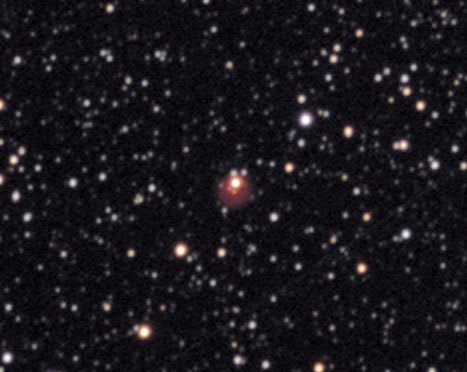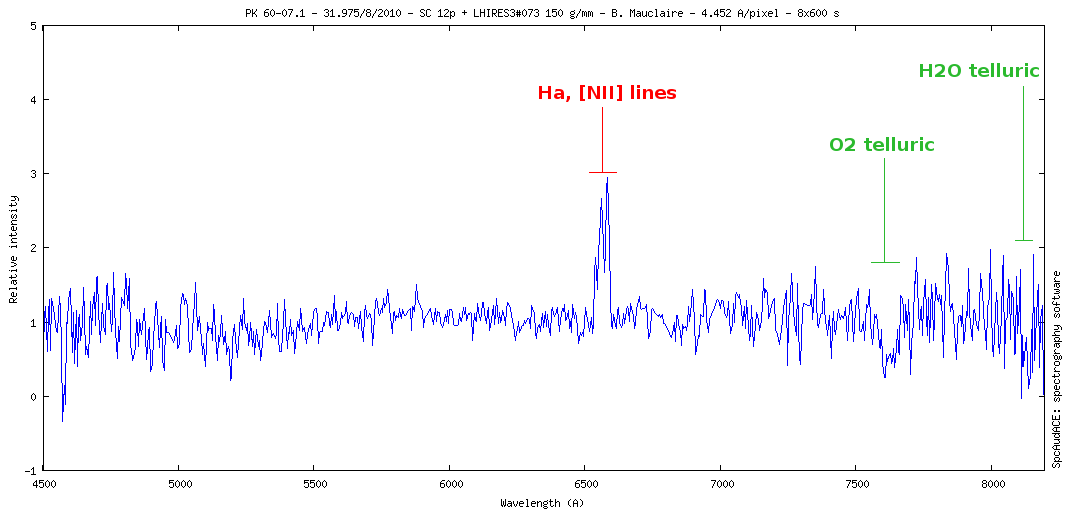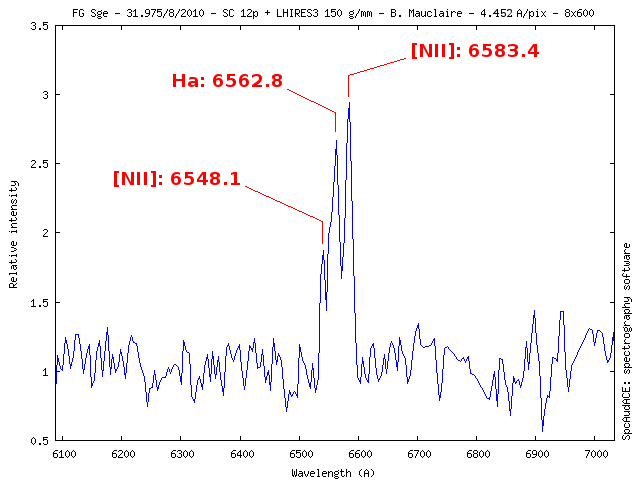planetary nebula PK 60-07.1 / He 1-5

Glen Youman's
Astrophotos. July 2007 FS-128 (ag, ST-4)
ST-2000XM (s)LRGB 10 minute subs.

Glen Youman's
Astrophotos. July 2007 FS-128 (ag, ST-4)
ST-2000XM (s)LRGB 10 minute subs.

FG Sge and PK 60-07.1 history:
1. FG Sge underwent a helium flash a few centuries in the past, ejecting a shell.
2. It became a hot star after it ceased hydrogen burning, now burning helium at the core.
3. Next, hydrogen is ignited in the outer layers of the star.
4. As the star rapidly evolves to the red end of the spectrum, hydrogen burning mixed with helium burning causes the s-process elements to appear near the surface.
5. Ejection of a shell caused deeper layers of the star to be observed making it to appear fainter-in the visual and appear bluer. This makes an increase in the ultraviolet (UV) flux.

Purpose and dedicated setup:

PK 60-07.1 spectrum:
![]()
FG Sge 2D spectrum. Geometric corrections done. Note
light pollution from urban lights.

PK 60-07.1 normalized spectrum from 4500 to 8300 Å
taken August 31th 2010. pk_60-071_20100831_975.fit.
With this mag 16.0 nebula, 2x2 binning and a minimum exposure of 1h20 were required with my SCT 12" and Lhires3 150 g/mm, 27 μm slit spectrograph. Though, with longer exposure, it would have been brighter.
This spectrum shows that such spectrograph as Lhires3 150 g/mm (LISA will do it too) is able to manage faint (mag. 16 !) unstellar targets like this planetary nebula.
15 s exposure on CCD KAF 400. Note the annular PN shape with a mag. 13 surimpressed are visible on right side of the slit.

Chemical analysis:
 No [OIII] lines visible. A strong [NII] 6543.4 Å
line is visible. He 1-5 is a young PN.
No [OIII] lines visible. A strong [NII] 6543.4 Å
line is visible. He 1-5 is a young PN.

FG Sge bibliography:

PK 60-07.1 bibliography: